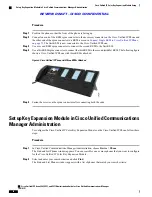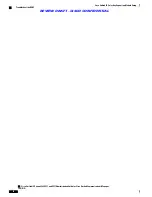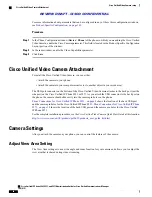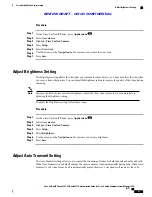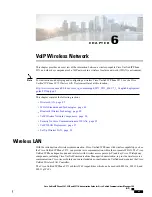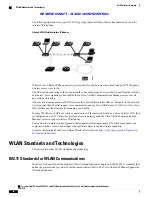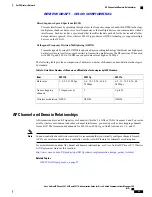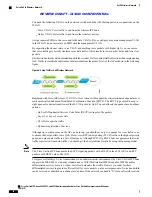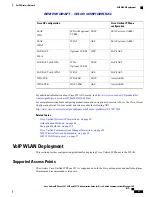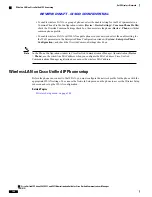
Receiver sensitivity
Range
Data rate (See
Note 2)
Maximum Tx power
(See Note 1)
Standard
-91 dBm
709 ft (216 m)
6 Mbps
16 dBm
-90 dBm
650 ft (198 m)
9 Mbps
-87 dBm
623 ft (190 m)
12 Mbps
-86 dBm
623 ft (190 m)
18 Mbps
-82 dBm
623 ft (190 m)
24 Mbps
-80 dBm
495 ft (151 m)
36 Mbps
-77 dBm
413 ft (126 m)
48 Mbps
-76 dBm
394 ft (120 m)
54 Mbps
802.11b
-96 dBm
1,010 ft (308 m)
1 Mbps
17 dBm
-85 dBm
951 ft (290 m)
2 Mbps
-90 dBm
919 ft (280 m)
5.5 Mbps
-87 dBm
902 ft (275 m)
11 Mbps
Note
1
Adjusts dynamically when associating with an AP if the AP client setting is enabled.
2
Advertised rates by the APs are used. If the Restricted Data Rates functionality is enabled in the Cisco
Unified Communications Manager Administration phone configuration, then the Traffic Stream Rate
Set IE (CCX V4) is used.
For more information about supported data rates, Tx power and Rx sensitivity for WLANs, see the
Cisco
Unified IP Phone 9971 Wireless LAN Deployment Guide
at this location:
http://www.cisco.com/en/US/products/ps10453/products_implementation_design_guides_list.html
Wireless Modulation Technologies
Wireless communications use the following modulation technologies for signaling:
Cisco Unified IP Phone 8961, 9951, and 9971 Administration Guide for Cisco Unified Communications Manager
10.0 (SIP)
88
VoIP Wireless Network
Wireless Modulation Technologies
REVIEW DRAFT - CISCO CONFIDENTIAL

